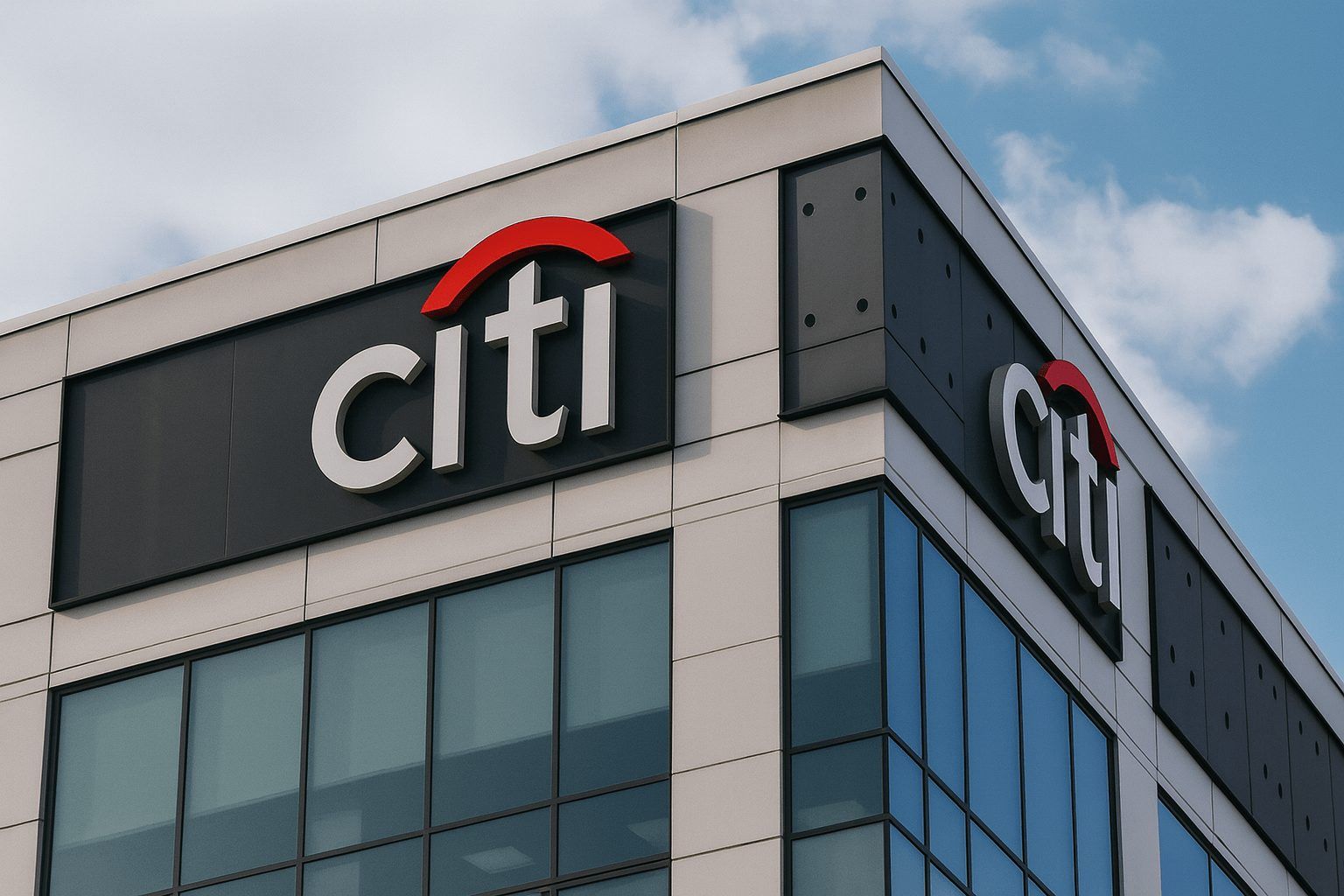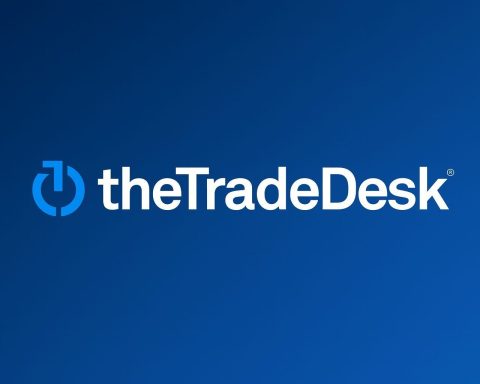Date: Sunday, November 23, 2025 – Weekend wrap‑up ahead of the next U.S. trading session
Citigroup stock snapshot (as of the last close)
- Ticker: Citigroup Inc. (NYSE: C)
- Last close (Friday, Nov 21):$98.70, up about 1.1% on the day [1]
- Intraday range (Fri): roughly $95.85 – $99.31 [2]
- 52‑week range: about $55.51 – $105.59 [3]
- 1‑year performance: roughly +40–45% total return, reflecting a strong 2025 rebound [4]
- Market cap: around $176–177 billion
- Valuation:P/E ~13.9, PEG ~0.8, beta ~1.4 [5]
- Dividend: quarterly $0.60 per share (annualized $2.40, ~2.4% yield), next payment due Nov 26, 2025 [6]
With markets closed for the weekend, Citigroup stock today (Nov 23, 2025) is anchored to Friday’s close at $98.70, capping a year in which the bank’s turnaround story, leadership shake‑up and hefty buybacks have pushed the shares sharply higher.
At the same time, fresh news about a third‑party data breach, new institutional filings and the surprise CFO transition are shaping how investors will think about C when trading resumes.
1. Today’s biggest Citigroup headlines (November 23, 2025)
1.1 Vendor hack raises data‑exposure concerns for Citi clients
The most urgent headline today centers on cybersecurity risk rather than earnings.
A November 23 Reuters report says a November 12 cyberattack on real‑estate technology vendor SitusAMC may have exposed sensitive client data from several major banks, including JPMorgan Chase, Citigroup and Morgan Stanley, according to people cited by The New York Times. [7]
Key points:
- Attackers accessed files containing accounting documents and legal contracts tied to clients of SitusAMC.
- SitusAMC says the incident has been contained, its systems are fully operational, and law enforcement has been notified.
- The firm has not publicly named affected banks; Citi and its peers have so far declined to comment.
- There is no indication that core banking systems or customer accounts at Citi were disrupted.
For Citigroup shareholders, the story is less about immediate financial damage and more about headline and regulatory risk: any confirmed customer data exposure could lead to remediation costs, reputational damage, or heightened scrutiny from regulators already focused on Citi’s controls.
1.2 Big‑money reshuffling: Journey, Neo Ivy add Citi while Rhumbline trims
New 13F‑style filings summarized by MarketBeat today show active institutional repositioning in Citigroup stock: [8]
- Journey Strategic Wealth LLC
- Boosted its stake by 58.7% in Q2, adding 4,364 shares to bring its position to 11,801 shares, worth about $1.0 million. [9]
- Neo Ivy Capital Management
- Initiated a new position of 12,880 shares, valued at roughly $1.1 million. [10]
- Rhumbline Advisers
- Trimmed its stake by 2%, selling 68,203 shares but still holding about 3.29 million shares, worth roughly $280 million and representing about 0.18% of Citigroup. [11]
Across these reports, MarketBeat highlights the same fundamental picture:
- Q3 2025 EPS:$2.24, beating consensus of about $1.89. [12]
- Q3 revenue: roughly $22.09 billion, up 9.3% year over year and ahead of Street estimates. [13]
- Dividend: quarterly $0.60, about a 2.4% yield at current prices. [14]
- Ownership & sentiment: around 71–72% of the float is held by institutions, and Wall Street’s consensus is a “Moderate Buy” with an average target near $107–108, implying solid upside from the high‑$90s. [15]
The net message from today’s filings: large investors are still broadly constructive on Citi, with some (Journey, Neo Ivy) adding on strength while others (Rhumbline) lock in profits after a big run.
1.3 Weekend focus: Will Citi’s leadership shuffle reinforce its efficiency drive?
A fresh analysis on Yahoo Finance titled “Will Citi’s (C) Leadership Shuffle and Reorg Cement Confidence in Its Efficiency Drive?” landed this morning, digging into the bank’s CFO transition and U.S. personal banking overhaul. [16]
While the full piece is paywalled for some readers, the visible summary and linked research note highlight:
- A fair‑value estimate around $114.10 per share, about 16% above Friday’s close. [17]
- The view that Citi’s forecast returns and cost savings still support the 2026 profitability target, despite the surprise CFO announcement.
That article builds on the official news from November 20: Citigroup will transition CFO Mark Mason out of the role in early March 2026, replacing him with Gonzalo Luchetti, currently head of U.S. Personal Banking. [18]
From Citi’s own press release and follow‑up coverage in Reuters, the FT and Barron’s, the leadership and structural changes include: [19]
- CFO transition
- Mason remains CFO until early March 2026, then becomes Executive Vice Chair and Senior Executive Advisor to CEO and Chair Jane Fraser, before exiting Citi by the end of 2026.
- Luchetti becomes CFO after Citi files its 2025 year‑end results, bringing a track record of 12 straight quarters of positive operating leverage and U.S. Personal Banking returns in the mid‑teens.
- Business reorganization
- Citi’s U.S. retail bank (Everyday Banking, Citi Priority, Citigold tiers) will be folded into the Wealth business, led by Andy Sieg; Kate Luft will run the combined U.S. Retail Banking and Citigold unit.
- Branded Cards and Retail Services will merge into a standalone U.S. Consumer Cards business, led by Pam Habner, who will report directly to Fraser and join Citi’s executive management team.
Analysts broadly see the moves as the next phase of Jane Fraser’s simplification and efficiency push, but Mason’s unexpected departure has raised questions about succession planning and future messaging around Citi’s transformation. [20]
2. Q3 2025: Citi’s turnaround shows up in the numbers
Much of today’s institutional and analyst commentary still points back to Citigroup’s strong Q3 2025 earnings, released on October 14.
From Citi’s own earnings materials and multiple independent summaries, the quarter looked like this: [21]
- Revenue: about $22.09 billion, up 9.3% year over year, and comfortably ahead of estimates near $21.1 billion.
- GAAP EPS: roughly $1.86 per share.
- Adjusted EPS: about $2.24, beating the consensus by roughly $0.30–$0.35 and growing more than 20% vs. last year.
- Return on tangible common equity (ROTCE):
- Reported ROTCE around 8%, up about 1 percentage point year over year.
- Excluding a notable item, ROTCE was ~9.7%, moving decisively toward management’s 10–11% ROTCE target for 2026. [22]
- Business‑line highlights:
- Markets revenue around $5.6 billion, up 15%, with both Fixed Income and Equities up double‑digits on strong client trading activity. [23]
- All five major segments (Services, Markets, Banking, U.S. Personal Banking, Wealth) delivered positive operating leverage, meaning revenue grew faster than expenses. [24]
- U.S. Personal Banking posted a record quarter, with revenue up around 7%, driven by cards and lending growth. [25]
- Capital and shareholder returns:
For investors looking at Citigroup stock today, Q3 matters because it validates Fraser’s multi‑year restructuring: Citi is finally showing mid‑single‑digit revenue growth, expanding margins and higher returns, all while stepping up buybacks.
3. Citi’s transformation plan: where the turnaround stands
Even before the latest CFO news, Citigroup has been clear about its medium‑term roadmap:
- Management expects revenues to grow 4–5% annually by 2026.
- Citi is targeting $2–2.5 billion of annualized run‑rate cost savings from its simplification program.
- The key financial goal: ROTCE of 10–11% in 2026, up from single‑digit levels in recent years. [28]
Recent commentary from Zacks, Nasdaq and S&P Ratings notes that: [29]
- Citi has shrunk non‑core operations, exited several international consumer markets, and is pushing more aggressively into Services, Markets and Wealth.
- The bank is investing heavily in automation and technology, including Citi Token Services, which recently expanded to support euro transactions and 24/7 multi‑currency liquidity for institutions. [30]
Put simply, the turnaround thesis that drove much of 2025’s share‑price rally is that Citigroup is finally morphing from a complex, lower‑return global bank into a leaner, more capital‑efficient one—and that today’s high‑$90s stock price still doesn’t fully reflect that shift.
4. How the new CFO and business overhaul could affect C
The CFO transition and U.S. personal‑banking overhaul are being interpreted as both an endorsement of Citi’s momentum and a risk to continuity.
From Citi’s own release plus detailed write‑ups in Reuters, the FT and Barron’s: [31]
- Strategic intent:
- CEO and Chair Jane Fraser frames the moves as “well‑timed,” putting in place a “next generation of leaders” ahead of a May 7, 2026 Investor Day, where Citi will update its multi‑year return plan.
- Bringing a business operator like Luchetti into the CFO role is meant to fuse front‑line growth experience with financial stewardship during the final phase of the transformation.
- Structural implications:
- Folding U.S. retail banking into Wealth aims to capture more high‑value clients across the income spectrum, with a unified team managing deposits, investments and affluent relationships.
- Elevating U.S. Consumer Cards as a standalone core business under Habner underscores how central co‑branded and proprietary cards are to Citi’s U.S. franchise.
- Market reaction:
- Headlines describe Mason’s departure as “unexpected,” given he has been a visible champion of the turnaround and key interlocutor with investors. [32]
- However, the stock has held up relatively well since the announcement, thanks in part to strong Q3 results and a year‑to‑date gain of roughly 40% that reflects revived confidence in Citi’s story. [33]
Today’s Yahoo/Zacks piece essentially poses the question investors are asking: does the new structure make it easier or harder for Citi to hit its efficiency and return targets? So far, the dominant view is that the financials still line up with the turnaround narrative, but the leadership shift raises the bar for flawless execution.
5. Valuation, dividend and analyst sentiment on November 23, 2025
With Citigroup trading around $98–99, how does the risk‑reward stack up?
From MarketBeat, Morningstar, Zacks and other coverage: [34]
- Valuation
- P/E: ~13.9 based on trailing earnings.
- PEG: ~0.8, reflecting expectations for healthy EPS growth relative to the multiple.
- Price vs. targets: the average Street target around $107–108 suggests high‑single‑digit to low‑double‑digit upside from Friday’s close.
- Some fundamental analysts (e.g., Morningstar) peg fair value closer to $90, arguing the shares are roughly fairly valued after the big rally, while others (including today’s Yahoo/Zacks note) see fair value north of $110. [35]
- Dividend and buybacks
- Street stance
- Around 11 Buy and 7 Hold ratings, with an overall “Moderate Buy” consensus. [38]
- Several brokers, including Morgan Stanley, KBW, Piper Sandler and Bank of America, have raised price targets into the $110–$134 range after Q3, citing accelerating returns, cost progress and aggressive capital returns. [39]
In short, Citigroup is no longer the deep‑value outlier it was a year ago, but many analysts still see it as undervalued vs. its long‑term profitability potential if the 2026 ROTCE goal is met.
6. How today’s news changes the risk picture for C
Putting today’s stories together, investors weighing Citigroup stock now face a blend of upside catalysts and fresh risks:
6.1 Catalysts
- Transformation momentum – Q3’s 9%+ revenue growth, improving ROTCE and strong capital returns show that the multi‑year restructuring is delivering real numbers, not just promises. [40]
- Leadership refresh – Elevating Luchetti and re‑wiring U.S. Consumer Cards and Wealth could unlock more profitable growth, especially in affluent banking and card partnerships. [41]
- Capital return – A hefty buyback pace plus a growing dividend offer a built‑in tailwind to EPS if book value keeps compounding. [42]
- Digital and tokenization efforts – Citi Token Services and related tech investments position the bank as a serious player in 24/7, multi‑currency institutional payments, which could be a structural growth driver. [43]
6.2 Risks
- Cybersecurity and data‑vendor risk – Today’s story about the SitusAMC hack is a reminder that even when a third‑party is at fault, regulators and customers will look to the big banks for accountability. If Citi is found to have had client data compromised, there could be costs, fines or legal exposure down the line. [44]
- Execution risk on the reorg – Integrating retail into wealth, elevating consumer cards and swapping CFOs in mid‑transformation adds complexity. Any misstep that delays the 2026 ROTCE target could sap the market’s renewed confidence. [45]
- Macro and regulatory headwinds – Higher capital requirements, credit losses in a downturn, or slower trading and investment‑banking activity could all pressure returns, even with the current cost program. [46]
7. Bottom line: What Citigroup stock looks like on November 23, 2025
Going into the new trading week, Citigroup stock sits just under $100, near the top of its 52‑week range and up roughly 40% over the past year. [47]
- The bull case emphasizes:
- A credible path to 10–11% ROTCE by 2026.
- Strong Q3 execution across all businesses, especially Markets, Services and U.S. Personal Banking.
- Aggressive buybacks plus a growing dividend, with institutional investors still net supportive. [48]
- The bear or cautious case points to:
- The surprise CFO transition and reorg as potential sources of execution and communication risk. [49]
- Fresh headlines about possible client‑data exposure via a third‑party vendor, underscoring ongoing compliance and operational‑risk challenges. [50]
- A share price that has already rerated higher, leaving less margin of safety if the macro backdrop deteriorates or transformation milestones slip. [51]
For investors tracking Citigroup stock today, the story is about whether the bank can convert its restructuring wins and leadership changes into sustainably higher returns without stumbling on risk or regulation—and whether the current high‑$90s price still offers enough upside to justify those risks.
This article is for informational purposes only and does not constitute investment advice or a recommendation to buy or sell any security. Always do your own research or consult a qualified financial adviser before making investment decisions.
References
1. www.macrotrends.net, 2. www.investing.com, 3. www.investing.com, 4. www.investing.com, 5. www.marketbeat.com, 6. www.citigroup.com, 7. www.reuters.com, 8. www.marketbeat.com, 9. www.marketbeat.com, 10. www.marketbeat.com, 11. www.marketbeat.com, 12. www.marketbeat.com, 13. www.marketbeat.com, 14. www.marketbeat.com, 15. www.marketbeat.com, 16. ca.finance.yahoo.com, 17. ca.finance.yahoo.com, 18. www.businesswire.com, 19. www.businesswire.com, 20. www.reuters.com, 21. finance.yahoo.com, 22. www.investing.com, 23. fxnewsgroup.com, 24. www.citigroup.com, 25. www.citigroup.com, 26. www.citigroup.com, 27. www.citigroup.com, 28. www.nasdaq.com, 29. www.zacks.com, 30. www.businesswire.com, 31. www.businesswire.com, 32. www.reuters.com, 33. simplywall.st, 34. www.marketbeat.com, 35. www.morningstar.com, 36. www.citigroup.com, 37. www.citigroup.com, 38. www.marketbeat.com, 39. www.marketbeat.com, 40. finance.yahoo.com, 41. www.businesswire.com, 42. www.citigroup.com, 43. www.businesswire.com, 44. www.reuters.com, 45. www.reuters.com, 46. www.reuters.com, 47. www.macrotrends.net, 48. finance.yahoo.com, 49. www.reuters.com, 50. www.reuters.com, 51. simplywall.st









